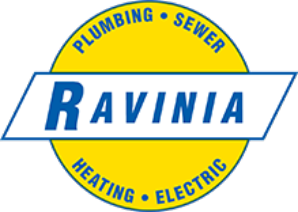
If you’ve ever had to make the tough call between repairing or replacing your heating and cooling system, you may have come across something called the $5,000 rule for HVAC. Homeowners in Lincolnshire, IL, and beyond often hear this phrase from technicians, but not everyone fully understands what it means or when it applies.
Ravinia Plumbing, Sewer, Heating & Electric knows these decisions can feel overwhelming, so we’re breaking down the $5,000 rule in plain language. This blog will explain what the rule is, why it exists, when it’s helpful, and when it might not apply—straight from a trusted Lincolnshire, IL, HVAC contractor.
Understanding the $5,000 Rule for HVAC
The $5,000 rule for HVAC is a simple formula to help homeowners decide whether to repair or replace their heating or cooling system. Here’s how it works:
- Take the age of your HVAC system.
- Multiply that number by the estimated repair cost.
- If the total is greater than $5,000, HVAC replacement is usually recommended.
- If the total is less than $5,000, repair might be the better option.
For example, let’s say your furnace or central air conditioner is 12 years old, and a repair will cost $400. Multiply 12 x $400, and you get $4,800. Since that’s less than $5,000, repairing the furnace or air conditioner could make sense. But if the repair was $600, the total would be $7,200—well above the threshold. In that case, HVAC replacement may be more cost-effective in the long run.
Why the $5,000 Rule Exists
The $5,000 rule for HVAC isn’t just a random number. It’s based on the relationship between cost, efficiency, and the average lifespan of HVAC system equipment.
Average Lifespan of Systems
Furnaces typically last between 15–20 years, while air conditioning systems and heat pumps have average lifespans of 10-15 years. Lifespan is highly dependent on maintenance, usage, and brand. The older your HVAC system gets, the less efficient it becomes, and the more likely it is to need expensive repairs.
Balancing Repair Costs and Value
Spending thousands of dollars on frequent repairs for older HVAC systems often doesn’t make sense financially. The rule is designed to stop homeowners from sinking money into equipment that’s nearing the end of its useful life.
Energy Efficiency and Utility Bills
Even if you keep patching up an older system, it probably isn’t the efficient system it used to be. A new system has a higher AFUE (annual fuel utilization efficiency) or SEER (seasonal energy efficiency ratio) rating, and hasn’t lost efficiency over years of operation. While more expensive upfront, a new HVAC system can save money month after month on energy bills.
Confident Decision-Making
The $5,000 rule for HVAC offers a straightforward guideline that takes the guesswork out of decision-making. It helps you feel confident about whether a repair is worth it or if a new unit is the smarter long-term choice.
When the $5,000 Rule for HVAC Applies
There are many situations where the rule can be a helpful decision-making tool.
- Older Systems With Frequent Breakdowns: If your heating system or AC unit is more than 10 years old and repairs are becoming common, the $5,000 rule often points toward replacement.
- Major Component Failures: Replacing a compressor, heat exchanger, or motor can be costly. Using the rule helps determine whether the investment makes sense.
- Planning for the Future: If you know your system is nearing the end of its life, the rule can help you plan ahead for a replacement before it completely fails.
When the $5,000 Rule Doesn’t Apply
While the $5,000 rule for HVAC is a useful guideline, it isn’t the only factor you should consider. There are times when it may not be the best tool:
- New HVAC System: If your air conditioner or furnace is only a few years old, it probably makes sense to repair it—even if the formula suggests replacement. A system that new still has a lot of useful life left.
- Small, One-Time Repairs: A minor repair with an estimated cost under $200 shouldn’t automatically trigger a replacement decision. Sometimes small fixes are just part of normal maintenance.
- Warranty Coverage: If your system or parts are still under warranty, repair costs may be minimal, making replacement unnecessary.
- Unique Circumstances: Every home is different. For example, if you plan to sell your home soon, a repair may make more financial sense than a full HVAC unit replacement, depending on your goals.
Nuances of the $5,000 Rule for HVAC
Like any guideline, the $5,000 rule should be considered alongside other factors:
- Comfort and Performance: Even if the math says repair, you might choose replacement if your system struggles to keep your home comfortable.
- Energy Rebates and Incentives: Sometimes, HVAC industry and utility rebates or tax credits make upgrading more affordable. In those cases, replacement could make sense earlier than the rule suggests.
- Rising Energy Costs: Utility rates continue to increase, which means efficiency plays a bigger role than ever in long-term savings.
- Environmental Impact: Older systems often use outdated refrigerants or produce more emissions. Replacing them can reduce your carbon footprint.
Why Work With a Lincolnshire, IL HVAC Contractor
The $5,000 rule is a great starting point, but it isn’t a substitute for advice from an HVAC professional. A trusted Lincolnshire, IL, HVAC contractor like Ravinia Plumbing can assess the unique condition of your system and provide custom recommendations.
When you call our team, we don’t just look at age and repair costs. We also consider:
- The overall health of your system.
- How often you’ve needed repairs.
- Whether your system is properly sized for your home.
- Your comfort, budget, and long-term goals.
By combining the $5,000 rule for HVAC with our expert insights and repair estimate, you’ll have all the information you need to make the best decision for your family.
Making the $5,000 Rule Work for You
The $5,000 rule for HVAC is a simple yet effective tool to guide your repair-or-replace decision. It exists to help homeowners avoid putting too much money into aging systems that no longer deliver value. While the rule applies in many cases, it’s not universal. Factors like system age, warranty coverage, comfort, efficiency, and future plans should all be part of the conversation.
If you’re facing this decision, don’t go it alone. Reach out to Ravinia Plumbing, your trusted Lincolnshire, IL, HVAC contractor, for an honest assessment. We’ll walk you through your options and help you decide whether repair or replacement is the smarter investment.
